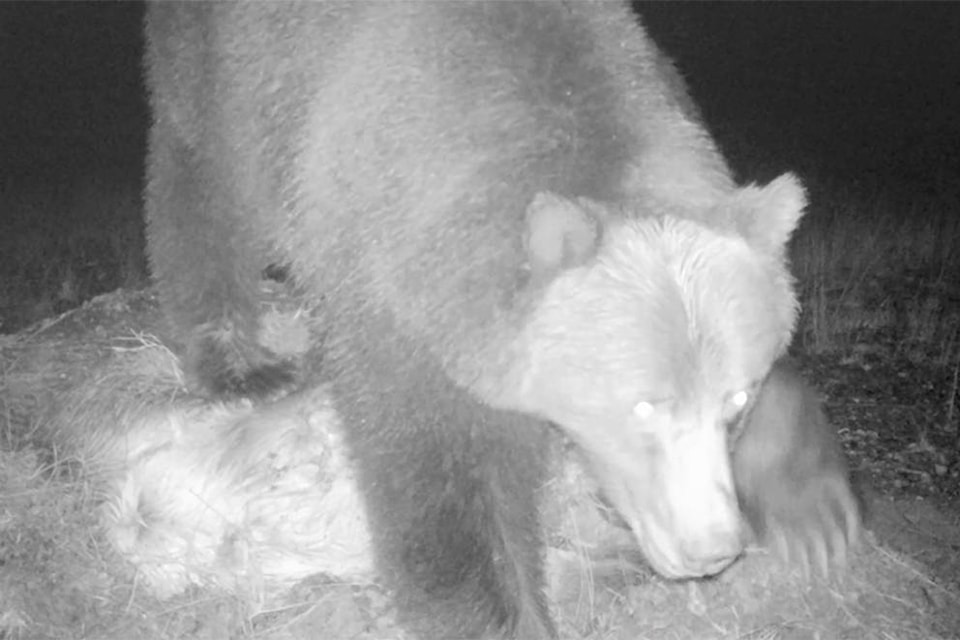The Ministry of Transportation and Infrastructure (MOTI) has developed enclosed carcass collection facilities along Highway 3 in an effort to reduce human-wildlife conflicts.
This comes eight months after The Free Press first reported the relationship between the use of carcass pits and a spike in human-wildlife conflicts.
In January 2019, The Free Press reported that in 2018, there were 38 calls out of Jaffray regarding bear conflicts, as compared to almost no calls in 2017. This prompted a public meeting in Jaffray which was attended by close to 200 people.
Previously, the current method of roadkill disposal was to dump the carcasses in designated pits. The Ministry of Transport allowed highway contractor Mainroad to dispose of roadkill in this manner.
Year round, carcasses were being dropped at several pits around the Valley, one of which was close to Jaffray and residential properties. Tracking data collected by scientists showed grizzly bears using those pits and sleeping near them as well.
Wildlife biologist Clayton Lamb said in January that the continued use of carcass pits in the South Country was driving an increase in bear traffic.
Look back: VIDEO: Carcass pits, rural attractants contribute to Jaffray bear conflict: biologist
On September 19, MOTI announced the construction of enclosed carcass collection facilities along Highway 3. A Ministry spokesperson explained that this came after a request by the Ministry of Forests, Lands, Natural Resources and Rural Development to assist in managing bear activity in the area.
“The facilities are made of concrete lock blocks and surrounded by electric fencing,” said MOTI in a an email. “The facilities are designed to keep bears and other scavenging animals away from the wildlife carcasses.”
According to MOTI, the first facility at Elko is now operational, and a location east of Sparwood is in the pre-construction phase. A third facility is also in development for the Yahk area along Highway 3, and is pending provincial funding.
Kootenay East MLA Tom Shypitka said he was impressed by the initiatives by MOTI to try and solve this problem.
“I’ve just got to hand it to the Ministry of Transportation for taking it on themselves more than anything, just to come up with something, some kind of solution to this,” said Shypitka.
“They definitely are trying to be proactive instead of reactive with this kind of thing,” he added. “It’s cool, hopefully it works.”
